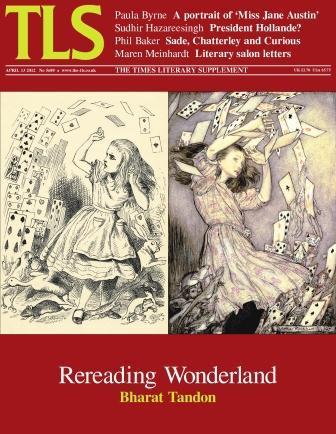The rereading habits of the TLS staff
By Rozalind Dineen
In this week’s TLS, Bharat Tandon reviews two books on the subject of rereading. That’s right, rereading; as if the pile of books that we would like a chance to read even once isn’t large enough.
But rereading, as Tandon reminds us, can be one of life’s particularly rich experiences: it is where the narratives of novels and the narratives of our own lives “can converge meaningfully”. When we reread we remember where we were the first time, who we were and how we were. We realize how we reacted differently to a text when we were younger, or sicker, or holidaying or studying. “We may try to be semioticians . . . but autobiography is always breaking in.”
An office survey is one way to pass a Friday afternoon. So, do the TLS staff reread?
Some said no, only children and academics really reread. Others emerged as constant returners to favourite texts: Stalky & Co. by Rudyard Kipling, Infinite Jest by David Foster Wallace. Poems are perfect for the rereader, book-length ones for the truly dedicated; “Madoc: A mystery” by Paul Muldoon and “The Oval Window” by J. H. Prynne were both mentioned. Graham Greene gets revisited, Money has been too. Siri Hustvedt’s What I Loved was the only book available to one staff member in a far off hotel on a rainy day, it turned out to seem more relevant and far more detailed the second time around.
One editor returned to a book he loved, Mikhail Lermontov's A Hero of Our Time, only to find it desperately disappointing. “It taught me not to go back to books I'd loved.” Another said she went back to D. H. Lawrence after a teenage infatuation, “and discovered that I hadn’t really ‘got’ it at all. The fourteen-year-old me had completely missed any hints of sadism, sexism or machismo – not to mention all that business about the yellow catkins, long danglers and little red flames.”
Julia Donaldson's The Gruffalo, The Gruffalo's Child, Stick Man, Tiddler, The Highway Rat, Tabby McTat and Zog all came up, having been read and read and reread once more (“but only once more and then lights out”) as bedtime stories. Asterix and The Wind in the Willows also featured, the TLS’s first reading of which was brilliantly wrong-headed (October 22, 1908): “The chief character is a mole, whom the reader plumps upon on the first page whitewashing his house. Here is an initial nut to crack; a mole whitewashing. No doubt moles like their abodes to be clean; but whitewashing? Are we very stupid? . . . However, let it pass . . . . We meet also a variety of animals whose foibles doubtless are borrowed from mankind, and so the book goes on until the end . . . . as a contribution to natural history the work is negligible.”
Some TLS editors read all the books that they review twice. Perhaps this anonymous reviewer of Kenneth Grahame did not. Or maybe he reread later in life and quietly changed his mind.
As rereading (just like its parent, reading) is an appetite that can never be satisfied, the follow-on question had to be, what would you reread in an ideal world? Proust, Dostoevsky, Jeffrey Archer. “Everything by William Gaddis, Underworld by Don DeLillo, One Hundred Years of Solitude by Gabriel Garcia Márquez (if I had some years of solitude in which to do so ho ho ho)”.
We welcome your rereading anecdotes below. It’s a way to pass a Friday afternoon.
Peter Stothard's Blog
- Peter Stothard's profile
- 30 followers




